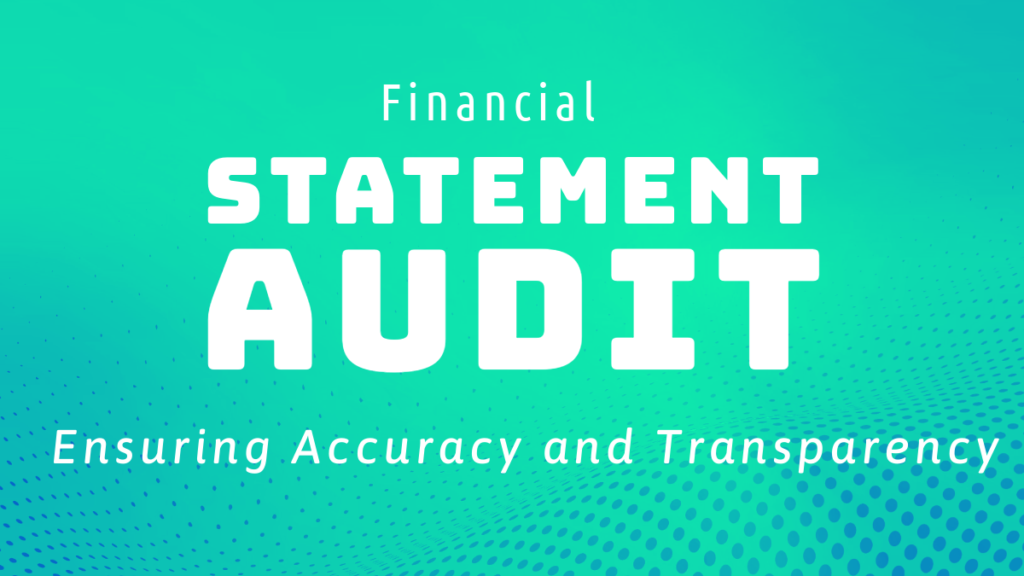A financial statement audit is an essential process for organizations to ensure the accuracy, reliability, and compliance of their financial information. It provides stakeholders—such as investors, regulators, and management—with confidence that the organization’s financial records are free from material misstatements.
This article explores the importance, process, and challenges of financial statement audits, alongside the role of modern tools like AI in streamlining financial operations. As a bonus, we’ll discuss how platforms like WebsiteBuilder.ai can help businesses manage and present their financial data more effectively.
What is a Financial Statement Audit?
A financial statement audit is an independent examination of an organization’s financial records, conducted by qualified auditors. The purpose is to assure that the financial statements accurately represent the organization’s financial position by applicable accounting standards.
Key components typically audited include:
- Balance sheets
- Income statements
- Cash flow statements
- Statements of shareholders’ equity
Auditors use a systematic approach to identify discrepancies, errors, or fraudulent activities that could mislead stakeholders.
Why Are Financial Statement Audits Important?
1. Building Stakeholder Confidence
An audited financial statement reassures stakeholders that the organization is transparent and compliant with financial regulations, fostering trust and credibility.
2. Regulatory Compliance
Most jurisdictions and industries require periodic financial audits to ensure compliance with laws and regulations, such as the Sarbanes-Oxley Act or International Financial Reporting Standards (IFRS).
3. Improved Financial Management
Audits often highlight inefficiencies or discrepancies in financial practices, helping organizations improve internal controls and financial management.
4. Attracting Investors and Funding
Accurate financial statements are critical for attracting investors, securing loans, or negotiating partnerships. Lenders and investors rely heavily on audited reports to assess financial stability and growth potential.
5. Fraud Prevention
Regular audits act as a deterrent against fraudulent activities, as employees and management know that financial records are subject to scrutiny.
The Financial Statement Audit Process
1. Planning and Risk Assessment
The auditor starts by understanding the organization’s business, industry, and financial systems. This phase identifies areas of potential risk and determines the audit’s scope.
2. Internal Control Evaluation
Auditors assess the effectiveness of internal controls, such as segregation of duties, access to financial systems, and approval processes.
3. Substantive Testing
This step involves examining financial transactions, account balances, and supporting documents to verify their accuracy. Sampling techniques are often used to test a representative portion of records.
4. Analytical Procedures
Auditors use ratios, trends, and other analytical tools to detect anomalies or inconsistencies in financial data.
5. Reporting
The audit concludes with an opinion on the financial statements, which can be:
- Unqualified: Financial statements are free from material misstatements.
- Qualified: Certain areas require attention, but the overall financial statements are accurate.
- Adverse: Financial statements are materially misstated.
- Disclaimer: The auditor cannot provide an opinion due to insufficient evidence.
Challenges in Financial Statement Audits
1. Complexity of Financial Regulations
Compliance with evolving accounting standards and tax laws can make audits more challenging and time-consuming.
2. Data Accuracy
Errors or discrepancies in financial records can complicate the audit process and delay conclusions.
3. Fraudulent Activities
Sophisticated fraud schemes may require additional scrutiny, forensic accounting, or specialized expertise to detect.
4. Time and Cost Constraints
Audits require significant time and resources, particularly for larger organizations with complex financial operations.
The Role of Technology in Financial Audits
Technology is revolutionizing the way audits are conducted. Modern tools help streamline processes, improve accuracy, and reduce manual effort.
1. AI and Machine Learning
AI-driven systems can analyze large datasets, detect anomalies, and identify trends faster than traditional methods.
2. Automation
Repetitive tasks, such as document verification and data entry, can be automated, allowing auditors to focus on complex issues.
3. Cloud-Based Systems
Cloud platforms enable real-time access to financial data, enhancing collaboration between auditors and clients.
4. Advanced Analytics
Predictive analytics and visualization tools help auditors uncover insights and detect potential risks more effectively.
Leveraging AI to Enhance Financial Operations
Beyond audits, businesses can use AI-driven platforms to streamline financial management and enhance their operations. For example, WebsiteBuilder.ai is a powerful tool that can help organizations:
- Create Professional Websites: Design websites that showcase financial reports and other critical information.
- Enhance Communication: Provide stakeholders with easy access to audited statements, policies, and updates.
- Save Time and Resources: Build websites quickly with AI, reducing dependency on external developers.
By integrating AI tools like WebsiteBuilder.ai, businesses can improve transparency and professionalism while staying ahead in the digital age.
Conclusion
A financial statement audit is more than just a compliance requirement—it’s a critical process for building trust, improving financial management, and safeguarding against fraud. While challenges exist, advancements in technology and tools are making audits more efficient and effective.
To further enhance your organization’s operations, consider leveraging AI-driven platforms like WebsiteBuilder.ai. With its intuitive features, this platform can help you create a dynamic online presence, making your financial data accessible, transparent, and professionally presented. In an era where trust and transparency are paramount, combining reliable audits with innovative tools is the key to success.
